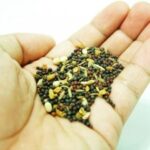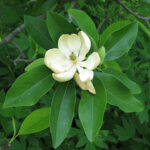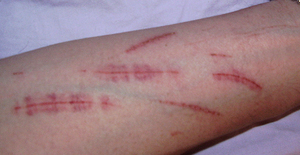When you eat an orange, you are giving your body a serving of fruit along with a healthy dose of vitamin C. But what else do you get with your orange. The peeling can be used for potpourri, or tossed into your compost pile. The seeds can be tossed out or better yet, why not try to plant them. It is easy to do and the only thing you will be out is a little time.
Growing a container orange tree indoors is a wonderful accent to any room in your house. If you live in UDSA zones below 9, this is a great way to grow an orange tree. Orange trees have glossy green leaves and eventually with the proper care it will have white flowers and bear fruit.
Wash and Plant the Seeds
When you finish eating your orange, wash the pulp off the seeds. You can fill a bowl with water to wash them. If any seeds float, throw them away because they are not viable.
I filled a small plastic container with potting soil. The container was an empty cherry tomato container with a lid on top. Air holes were already built in and it was ready to go. At the bottom of the container, I places a coffee filter to help keep the soil in place when it was watered.
Place the seeds on top of the soil. I used about five seeds. Place one seed by each corner and one seed in the middle. With your finger, push the seeds into the soil so they are a fourth inch to a half inch below the soil. Firm the soil in place lightly so the seed coat is in contact with the soil.
Find a Warm Place
Water the seeds until the soil is thoroughly wet. Allow the excess water to drain away before you place the seed tray into a plastic bag. The seeds need warmth in order to sprout so place them on a heat mat. I don’t own a heat mat, so I placed mine towards the back of my freezer.
Check the soil every other day for moisture. It should be moist, but not soggy. If the soil is kept too wet, your seeds may rot. It can take several weeks before the seeds germinate.
Transplant the Seedlings
Fill a small 4 inch pot with potting soil, remembering to put a coffee filter at the bottom of the pot to keep the soil in the pot every time you water. Carefully remove the seeds as they germinate. Poke a hole in the soil with a pencil and insert the seed into the hole. Firm the soil around the orange seedling to hold the plant upright.
Water the soil thoroughly and then place the pot in a bright window. I put mine in the kitchen window that faces south. This way I would remember to water them. Water your orange tree when the top of the soil is dry. Insert your finger to the first knuckle into the soil. If it feels dry, that is the sign that you need to water. Do not allow the pots to stand in the water for any period of time or the roots will rot.
Transplant into a Bigger Pot
As the seedlings grow and puts on their third set of true leaves, transplant each one into a 6 inch pot, filled with potting soil. Instead of a coffee filter, place shard at the bottom to cover the drainage holes. If you find any roots growing along the outside perimeter of the root ball gently tease them away. You want the roots to grow out into the soil, not continue to wrap around the rootball. If left in this way, the roots will gradually choke the plant to death.
There should be a half inch of room between the top of the soil and the rim of the pot. It is important to remember to not bury the orange tree any deeper than it was originally growing. If you do, the tree will rot and die.
Fertilize
In order for the orange tree to grow, it will need to be fed. Fertilize the tree each spring. You will want a fertilizer that is high in nitrogen such as 12-4-4 or 21-7-7. Read and follow label directions.
Provide Humidity
Orange trees like humidity. This is done in a number of ways. You can mist your orange tree with a sprayer bottle filled with water. You can place a humidifier nearby, or fill a tray with rocks and fill it with water. The water level should fall just below the top of the rocks. Place the pot on top of the rocks. The humidity level for healthy orange trees is 45 to 50 percent during the winter months.
As the orange tree grows, transplant it into a pot that is two sizes bigger then the one it is growing in. The best time to transplant the orange tree is in the spring when they are coming out of dormancy. It will minimize the shock of being repotted. Also, if you live in an area where the days are cloudy, you may want to install a grow light for your orange tree.
Resources:
University of Florida: Growing Fruit Crops in Containers
Gardening Central: Growing Orange Trees
What Price: Conservatory Orange Trees
The House Plant Expert” Dr. D. G. Hessayon 1980






